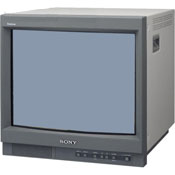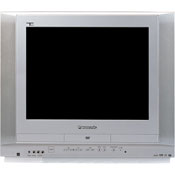Resource Guide Homepage
Resource Guide Homepage
Video Monitors
Video monitors have until quite recently been the most commonly used display devices for the exhibition of video and media art works. Monitors, including presentation monitors and flat screens such as plasma and LCD, can supply a bright, focused image under various lighting conditions, although ambient and direct light will still affect the displayed image and the optimum viewing angle. The video monitor has an important history in relation to early single-channel video works. Works that make a specific technological or conceptual reference to the video monitor or "box" should be shown as such. The artist's intention and the content of the work are vital in determining the appropriate display equipment.
Note: CRT (Cathode Ray Tube) technology was first implemented by German physicist Karl Ferdinand Braun in his 1897 oscilloscope. CRT is a specialized vacuum tube in which images are produced when a moving electron beam strikes a phosphorescent surface. Until recently CRT technology was traditionally used in oscilloscopes, televisions, video monitors, and computer displays. This three-gun technology, red - green - blue, will soon be completely replaced by flat screens (LCD and plasma). In 2005 Sony announced that it would stop the production of CRTs. Numerous early video works were made with CRT technologies as a direct or conceptual reference. As CRT technology becomes obsolete, careful consideration must be given to the presentation of these works. Visit the Preservation section of the Guide for a discussion of this issue.
A presentation monitor is designed with resolution, quality, and durability in mind. Used in industrial, corporate and exhibition contexts, these monitors have a substantial shelf life, can sustain constant playing, and come with professional video inputs that can accommodate high-quality data transfer. Recent models also include a "wide screen" display feature that can play both 4:3 and 16:9 aspect ratio footage without distortion. Presentation monitors do not typically include built-in speakers, and must be paired with either self-powered or amplified speakers for exhibition of works with sound.
Television, consumer-grade televisions are not designed with the wear and tear of exhibition in mind and cannot compete with the general durability and lifespan of a presentation monitor. An exhibitor acquiring equipment for the long term should invest in a monitor rather than a television. Avoid units that have built-in DVD or VHS playback systems, as one element will inevitably break before the other, debilitating the equipment in an exhibition environment.

